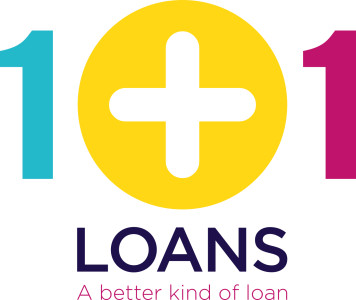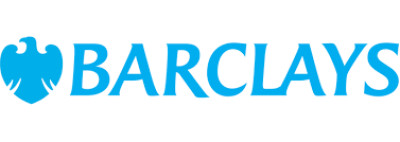Student Loans

Student loans offers

HSBC offers personal, premier, car, home improvement, and debt consolidation loans with competitive rates and exclusive premier benefits.
Pros and cons

Santander offers various loans for personal needs, cars, home improvements, consolidating debts, and special occasions.
Pros and cons

1Plus1 Loans, founded in 2013, offers unsecured personal loans from £1,000 to £10,000, prioritizing affordability for borrowers with complex credit histories.
Pros and cons

Barclays, a leading UK bank since 1690, offers diverse personal loans globally. Flexibility, quick online application, and tailored options define its services.
Pros and cons
Full Explanation of Student Loans
Navigating the world of student loans can be overwhelming to any student who has not been exposed to the existing options. Knowing fine details on these loans will enable making proper decisions on education financing.
Loans to finance education are the primary source of financial support for higher-education students. By March 2023, the total outstanding student finance loan debt reached £206 billion in England. As projected, by the mid-2040s, this figure would reach £460 billion. In annual disbursement, approximately £20 billion is lent to about 1.5 million students (Commons Library).
That is why, given the profound effect of student loans on individual finances, it becomes essential to know their benefits and functioning. Students could, therefore, make informed decisions in managing education financing effectively and building a robust financial future.
What Are Student Loans and How Do They Work?
Student loans are financing options given to students to help and cater to their higher education expenses, especially tuition, books, and living expenses. Most of the time, such loans have a relatively low interest rate compared to other forms of loans and are lenient when it comes to paying them back.
With borrowing comes an agreement to repay principal plus interest over a specified period. The understanding regarding the student loan rates and repayment is different depending on whether federal or private. Federal loans mainly bear more favorable terms under an income-driven repayment plan, which sometimes considers the forgiveness of such loans.
First, you have to understand the basics of loans, and then you will be better able to handle education financing.
Why Opt for a Student Loan?
Using a loan to finance your education can be strategic for a number of reasons. Let's explore some of these key advantages that make student loans so valuable:
- Accessibility: Loans to cater for individuals who do not have immediate funding for tuition and other related costs, hence making higher education possible.
- Advantages: Federal loans have some key benefits, such as deferments and forbearance, available to a borrower during any period of financial hardship.
- Credit Building: You can even benefit from credit building with a student loan, if you are regular in making repayments.
This can benefit your credit score and allow you to quickly access other credit in times to come.
Variety of Student Loans Available
Knowing the types of student loans is relevant for choosing the appropriate one. In this section, we contrast some of the primary types of loans.
Federal vs. Private Student Loans
The government grants federal loans and carries considerably more lower interest rates, besides having easier repayment conditions than private loans.
Here are some of the main differences between federal and private loans:
- Interest Rates: Federal student loans are usually amortized at lower, fixed interest rates, unlike private loans, which are mostly issued at higher and variable rates.
- Repayment Options: Federal loans have more lenient repayment options, such as income-driven student loan plans, while with private loans, this may be stricter.
- Credit Requirements: Federal loans do not require a credit check; all but the PLUS loans do. Private ones, on the other hand, usually look for good credit or a co-signer.
Private loans are offered by banks, credit unions, and other private lenders. These may have higher interest rates with less flexible payment options. But after all, they might work out when you need more money than what federal loans can provide.
Weigh the pros and cons of federal loans against private student loans to determine your best fit.
Subsidized vs. Unsubsidized Loans
Subsidized loans are need-based. The benefit here is that interest is paid by the government while in school and during grace periods, drastically reducing the total cost one would end up paying for the loan.
Here's a quick comparison of major features for subsidized and unsubsidized loans:
| Feature | Subsidized Loans | Unsubsidized Loans |
| Interest Payment | Government pays while you're in school | You are responsible for paying all the interest |
| Financial Need | Based on financial need | Not based on financial need |
| Loan Limits | Lower borrowing limits | Higher borrowing limits |
| Eligibility | Only available to undergraduates | Available to both undergraduates and graduate students |
The interest in unsubsidized loans is accrued from the date of disbursement. They are not need-based, but they do represent an essential option to a significant number of students who failed to qualify for the subsidized ones.
Parent PLUS and Graduate PLUS Loans
Parent PLUS loans are provided to the parents of dependent undergraduate students for an education expense that can't be covered under other financial aid; whereas graduate PLUS loans are available for graduate and professional students.
Both have a credit check and higher student loan interest rates against other federal loans. On the positive side, they can cover the whole cost for attendance minus other financial aid received.
It is critically important to understand the different types of available loans in making the appropriate choice. We always advise one to consider the many options available so that, in the end, a student will have an informed choice.
Key Features and Advantages of Student Loans
Such loans exhibit several key features and advantages that make them very attractive for education financing. We will consider some of the most essential features and benefits in this article.
Flexible Repayment Plans
Federal loans offer many different student loan repayment plans: standard, graduated, and income-driven. These provide options for borrowers to select a plan that best fits their financial situation and repayment ability.
Here is a summary of the available repayment plans:
- Standard Repayment Plan: The borrower must pay a fixed amount each month for ten years.
- Graduated Repayment Plan: These are the lowest payments for up to 10 years, but the payment rate will increase every two years.
- Income-Driven Repayment Plans: Payments in these plans are based on income and family size so that it may increase your repayment period to 20-25 years.
Probably one of the biggest pros of such loans is flexibility regarding their repayment plan.
Competitive Interest Rates
The interest rates for federal loans are generally lower compared to private loans. Again, under federal loans, interest rates are fixed; hence, your student loan rate won't be tampered with.
Because of the reduced rates and fixed interest rates, federal loans are very cost-effective for many students.
Quick Approval and Fund Disbursement
Application for federal student loans is easy, and the disbursal of funds is generally speedy. This thus ensures that the money needed for education is always available and on time for the students.
In conclusion, some of the key features and advantages of student finance loans have made the products attractive to many students. We are committed to helping you understand those benefits toward making the right financial decisions.
How to Qualify for a Student Loan
Getting a student finance loan requires knowing the qualification criteria and some preparation. This section clearly outlines, in points, how to ensure you meet the requirements for getting a loan.
Evaluating Your Financial Need
First in line to qualify for a loan is ascertaining your level of financial need. Under this falls your family's financial situation, its income, assets it has, and other sources that can be of financial aid to you. For federal loans, this would be provided by the Free Application for Federal Student Aid.
An accurate assessment of your financial need is essential to determine the amount of eligible aid.
Improving Your Eligibility
There are various ways of enhancing your loan eligibility. Some effective ways include:
- Keep a Good Credit Score: A good credit score will help you to get private student loans.
- Show Your Financial Need: You can complete the FAFSA to have a greater chance of being considered for federal loans.
- Apply for Scholarships and Grants: These don't need to be paid back and will reduce the amount you have to borrow.
Improvement of one's eligibility requires proactive financial management and pursuit of all available options for aid.
Selecting the Right Lender
Choosing the right lender is one of the significant steps in obtaining a loan. Federal student loans are always the first preferred option since they have attractive terms and conditions. However, you will more than likely go to private lenders if you need more money.
Research multiple private student loan lenders regarding interest rates, repayment terms, and customer reviews to make an informed decision. Our team has put together a list of reputable private lenders to help in the process.
The Application Process for Student Loans
The procedure for applying for a student finance loan is a step-by-step process whose result will determine whether you get the necessary funds for your education. We have highlighted below some of the significant steps to help you through this process.
Preparing Your Documentation
Get all of your documents in order before applying for a student loan. Commonly requested documentation includes your Social Security number, tax returns, income statements, and other personal financial information. For federal loans, you will need to fill in the FAFSA.
Keeping all documents on hand can help in fast-tracking the student loan application process and avoid wasting time.
The application process is smooth if well-prepared. Ensure that you have all the documents that are going to be required for this process before actually starting it.
Step-by-Step Procedure to Avail a Student Loan
This is how you can apply for a loan:
- Complete the FAFSA: Federal student loans require logging on and filling out an online application called the Free Application for Federal Student Aid. When you do this, it will assess your eligibility to get federal assistance as a student.
- Check Your SAR: Once you have completed the FAFSA, you will receive a Student Aid Report (SAR) that summarizes the information you provided in your application. Check it for accuracy.
- Apply to Schools: Your FAFSA information will be sent to all the schools you listed on your application. Using that information, each school will then package your financial aid.
- Compare the Financial Aid Packages: Compare the financial aid packages, including financial loans, that each institution will be able to provide after you have been admitted to some schools.
- Accept Your Loan: You need to pick a loan that best fits your needs and accepts it. Federal loans will require you to conduct an entrance counseling session and sign an MPN.
- Receive Funds: The fund mostly disburses funds directly into your school, covering tuition and fees. Extra funds from the fund are then awarded for other purposes.
Careful following of these steps can ensure that you obtain money for your education.
Managing Your Student Loan
Once you secure a loan, managing it effectively to avoid financial stress and ensuring timely repayment is very important. We will provide you with some creative tips and strategies so that you can face student loan payments better and still have effective finance management.
On-Time Repayment Strategies
Keeping track of your student loan repayment is very important for maintaining good credit and, most importantly, avoiding extra interest and extra fees. Here are some practical strategies for keeping up with repayments on time:
- Set Up Automatic Payments: You will never need to worry about missing another payment again.
- Make Payments While in School: Even small payments will let you chip away at some principal.
- Use Windfalls: Use extra money, such as tax refunds or bonuses, to your loan.
Ensure payments are timely and regular; such will help in the effective management of your loan.
Early Repayment Options
If you can afford to, keep in mind options for early repayment, which will help decrease the overall cost of your loan. Federal loans do not have prepayment penalties so that you can pay faster without extra fees.
You can save big money that way in interest over the life of your loan with early repayment.
Addressing Financial Challenges
Life can be unpredictable, and financial challenges may arise. If you face difficulties in repaying a student loan, explore options such as deferment, forbearance, or income-driven repayment plans. These options can provide temporary relief and help you manage your finances better.
Don't hesitate to seek help if you're struggling with student loan repayments. There are several options available to assist you.
Understanding and managing student loans is critical in financing your education. If you are well conversant with the types of loans, repayment options, and strategies for effective management, then you are on the correct pathway to making the best decisions concerning your financial future. RBO Loans reviews and provides an individual with information and tools necessary to navigate confidently in the world of student finance loans.
Pros and cons
Pros
- Makes higher education accessible
- Offers flexible repayment options
- Can help build credit
- Lower interest rates (for federal loans)
- Potential for loan forgiveness (for federal loans)
Cons
- Accrues interest over time
- Can result in significant debt
- Requires timely repayment
- Stricter terms for private loans
Frequently Asked Questions About Student Loans
What is a student loan?
A student loan is a form of financial aid proposed to help students with the expenses of higher education, which includes tuition, fees, and living expenses. It has to be paid back with interest after the student graduates or leaves the respective school.
How do federal and private student loans differ?
Federal loans are fixed-rate, offered by the government, and allow flexible repayment options. Private student loans, on the other hand, are variable-rate and presented by banks or other financial institutions with very few flexible terms.
What are the benefits of federal student loans?
Such benefits of federal loans to students include a reduced student loan rate of interest, income-driven repayment plans, and probable loan forgiveness programs.
How much can I borrow with a student loan?
Amounts borrowed through loans are limited based on the level of study, dependent/non-dependent status, and type of loan. Federal loans have limits on the amount one can borrow; private loans, if one can show a good credit score, may offer higher loan amounts.
Can I apply for a student loan with bad credit?
Yes, you can apply for a student loan with bad credit since federal loans are credit-check-free. Private loans may be harder to obtain with poor credit but might be possible with a cosigner.
What documents do I need to apply for a student loan?
To apply for a student loan, you'll need documents like your Social Security number, tax returns, proof of income, and details about your school and program. Federal applications also require completing the FAFSA form.
What is the duration taken for approval?
The federal loan can be approved within a few weeks after FAFSA submission. For a private student loan, it may take from a few days to several weeks, depending on the lender.
Are there any fees associated with student loans?
Yes, there are some fees for loans: origination fees associated with federal loans and, sometimes, application or disbursement fees associated with private loans. These are usually a certain percentage of the loan amount.
What is the rate of interest for student loans?
The rate of interest in the case of federal loans is fixed for loans, though the price is decided by the government every year. The interest rates for private loans will be variable or fixed and generally offer lower or better rates depending on credit scores or market conditions.
Repayment plans for student loans, how do they work?
Repayment plans of loan will vary. Programs for federal loans include standard, graduated, and income-driven repayment plans. Both of the latter two options change the monthly payment amount according to income. The private loan repayment plan depends on what has been set by your lender.
Can I defer my student loan payments?
You can defer student loan repayments under certain conditions, such as returning to school or economic hardship. The lender determines deferment policies on private loans and are less flexible than those on federal loans.
What if I'm unable to make a payment?
If you are unable to make a student loan payment, you need to discuss this with your servicer as soon as possible. This may include deferment, forbearance, or changing your repayment plan so you will not default on the loan.
How can I lower my student loan interest rate?
If your credit is good, it will make much sense to refinance with a direct private lender who will bring down your loan interest rate. Federal loans offer interest-rate reductions through manifold programs, including autopay enrollment or borrower benefits.
Are there student loans for graduate students?
Yes, graduate students can avail themselves of loans, like the federal options, direct unsubsidized loans, Grad PLUS loans, and private student loans designed for postgraduate education.
Can parents take out loans for their children's education?
Yes, parents can obtain federal Parent PLUS Loans to assist in funding in the student's name. These loans are issued directly in the parent's name and "require" a credit check. Private lenders will also offer loan products to parents for educational funding.